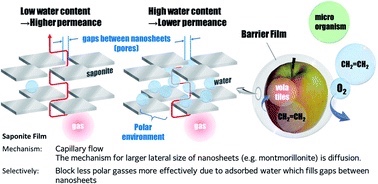
Material mechanism: Keeping apples fresh with nanosheets:
-Long-term storage technology for future food crisis-
2022.03.18
National Institute for Materials Science:
Utilize “a film made of clay nanosheets”.
It was discovered that covering the surface of apples with nanosheets preserves the freshness of the apples.
Prevent rot and mold:
The nanosheet film has a gap of appropriate size.
By moderately suppressing the breathing of fruits, rot and mold can be prevented.
Future food crisis:
Clay is an inexpensive substance that is abundant on the ground.
It will be a long-term storage technology for the future food crisis.
Cover with nanosheet dispersion:
The research group focused on the gas permeability of clay membranes.
Clay is part of the silicon atom in silicate
Clay has a layered structure that replaces aluminum
In the experiment, the nanosheet dispersion was applied to the surface of the apple and dried to form a film.
results of the experiment:
“Untreated apples” and “apples wrapped in plastic wrap” were compared.
“A few months later, untreated or wrapped apples only in wraps” had flesh crumbles and mold.
“Apples covered with clay nanosheets” do not rot.
No safety issues:
After long-term storage, the aluminum silicate can be rinsed with water.
Since it is originally a component of food additives, there is no problem with safety.
Science Portal-
https://scienceportal.jst.go.jp/newsflash/20220318_n01/
Keep apples fresh with clay | NIMS
https://www.nims.go.jp/news/press/2022/03/202203080.html
Highly adhesive and disposable inorganic barrier films: made from 2D silicate nanosheets and water
– Journal of Materials Chemistry A (RSC Publishing)
Abstract
A gas barrier film
with moderate permeance due to capillary flow and high adhesion was made from only water and layered aluminosilicates.The surface adsorbed water
acts as a polar binder between the layers of aluminosilicates which enhances gas barrier efficiency,
especially toward less polar gases.Oxygen permeability
was 4.91 × 10−16 mol m m−2 s−1 Pa−1 (23 °C, 60% relative humidity (RH),permeance: 4.31 × 10−12mol m−2 s−1 Pa−1), which is 1/26th that of Kraft paper (at 25 °C, 65% RH) and 146 times that of polyvinylidene chloride films.
This film with moderate gas permeability is suitable for the preservation of fresh produce requiring low level respiration after harvest.
https://pubs.rsc.org/en/content/articlelanding/2022/ta/d1ta08837h